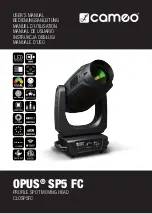
6 Operating modes
Bit
Value
Description
13
1
Following error
Bit 11: Limit exceeded: The demand position is above or below the limit values set in 607D
h
.
6.7.3 Object entries
The following objects are necessary for controlling this mode:
●
h
(Target Position): This object must be written cyclically with the position set value.
●
h
(Position Range Limit): This object contains the preset for an overrun or underrun of the position
specification.
●
h
(Software Position Limit): This object defines the limitations within which the position specification
(607A
h
) must be located.
●
(Following Error Window): This object specifies a tolerance corridor in both the positive and
negative direction from the set specification. If the actual position is outside of this corridor for longer than
the specified time (6066
), a following error is reported.
●
(Following Error Time Out): This object specifies the time range in milliseconds. If the actual
position is outside of the position corridor (6065
) for longer than this time range, a following error is
triggered.
●
(Quick-Stop Deceleration): This object contains the braking deceleration for the case that a quick-
stop is triggered.
●
h
(Quick-Stop Option Code): This object contains the option that is to be executed in the event of a
quick-stop.
●
(Motion Profile Type):
●
h
:01
h
(Interpolation Time Period): This object specifies the time of a cycle; a new set value must be
in these time intervals.
The following applies here: cycle time = value of 60C2
h
:01
h
* 10
value of 60C2:02
seconds.
●
h
:02
h
(Interpolation Time Index): This object specifies the time basis of the cycles. Currently, only
h
:02
h
=-3 is supported; this yields a time basis of 1 millisecond.
The following objects can be read in this mode:
●
(Position Actual Value)
●
h
(Velocity Actual Value)
●
h
(Following Error Actual Value)
6.8 Cyclic Synchronous Velocity
6.8.1 Note regarding USB
Note
Because this controller is not equipped with a fieldbus, the following operating mode can only be used
with a NanoJ program.
You can find further information on the programming and use of a NanoJ program in chapter
Programming with NanoJ.
6.8.2 Overview
6.8.2.1 Description
In this mode, the controller passes a speed preset via the fieldbus at fixed time intervals (referred to in the
following as a cycle). The controller then no longer calculates any ramps, but rather only follows the presets.
Version: 2.0.1 / FIR-v1650
73
















































